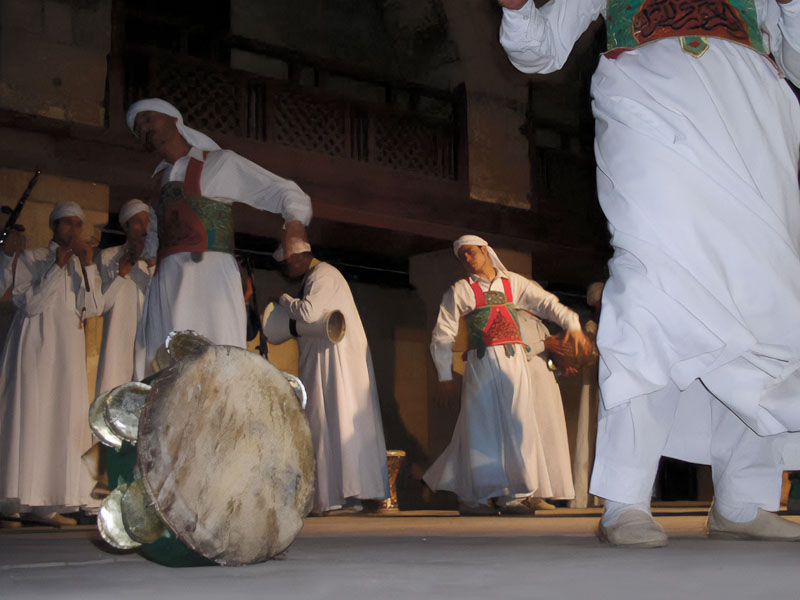Movement in Zar Rituals
Issue 13

Husam Muhasib (Egypt)
All peoples have rituals that shed light on the human psyche and that employ symbolic systems such as language. Attempts to analyse ritual behaviour must take into account the complex relationship between rituals and language. We can treat rituals as expressive forms of symbolic and mythical language. According to behaviourists, rituals are adaptive responses to environmental and social conditions.

Zar, a ritual dance performance, is a popular group dance used to mark significant events. Many tribes perform dances to mark marriages, deaths, circumcisions and healings. Zar is a form of healing by exorcism and mental illnesses are cured with spontaneous dancing.


There are rituals related to development and fertility and rituals of self-purification that clear people of spirit possession and sin. People seek to transcend everyday life through the performance of rituals. Zar falls within the second category as a self-purification ritual that includes dance, euphoria and animal sacrifices.

Zar combines traditional medicine, music, singing and movement, all of which bring peace provided the Jinns are obeyed. People must believe in Zar in order to benefit from it. Zar is increasingly used as a means of emotional release, and it has been performed on stage by the Cairo Opera Ballet.
Zar is a wonderful ritual dance rich in mime, gesture and music. If Zar sheds its metaphysical aspects, it could serve recreational or therapeutic purposes.

Folkloric performing arts have done a great deal to revive Zar, which had almost died out.
We can conclude that the movements performed in the festive atmosphere of Zar rituals are symbolic, reflecting the participants’ psychological states and their desires for self-purification.







































































